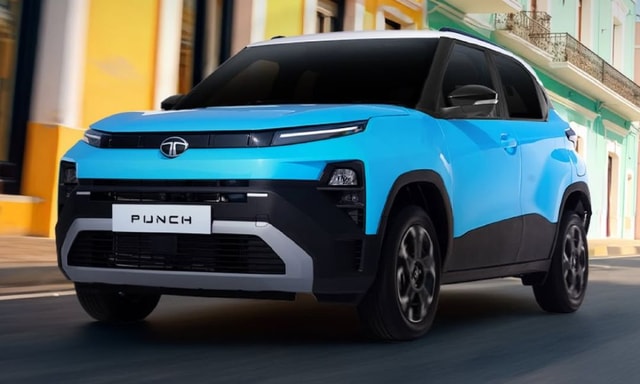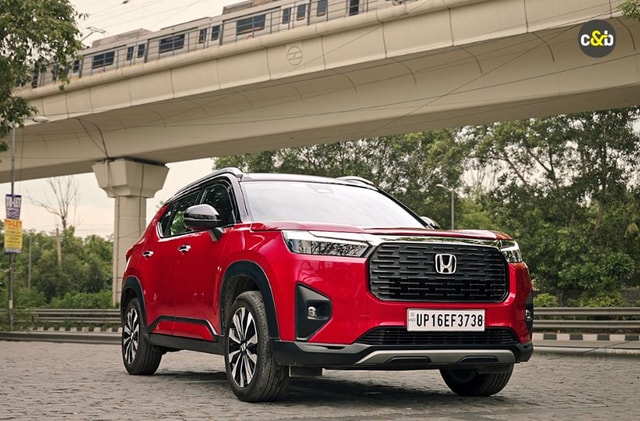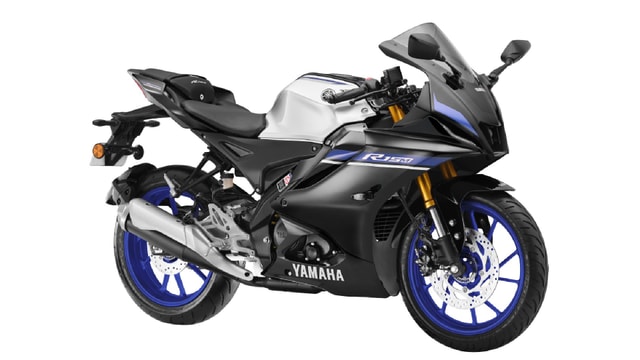Top 5 Adventure Riding Tips

- Choosing the right motorcycle and be well-prepared for your adventure
- Pick a bike which you will be comfortable with; which suit your purpose
- Wear the right gear, practice getting comfortable with the bike
Adventure riding may be a multi-day trip across the country, over different terrain and regions, or even a morning outing in the nearest trails. Depending on the kind of riding you do, and the purpose, experienced riders will have gained some valuable skills, but if you're starting out on two-wheeled adventures, some tips always come in handy. From choosing the right bike for yourself, and the purpose, working on your technique, on different types of terrain, it's always better to work on individual skills. Ultimately, there's no replacement for practice and some real-world training. But these tips will help get you started on any off-road adventure, big or small.
Also Read: Tips To Become A Better Motorcyclist
1. Choose the Right Bike

Always choose the bike depending on you skills and how easy or difficult it will be manage. Getting a burly, full-size adventure bike may not be a good idea if you have beginner level skills. Smaller adventure bikes like the KTM 250 Adventure or Hero XPulse 200 offer an un-intimidating platform to start adventure riding with, while bikes like the Royal Enfield Himalayan are more comfortable for longer touring duties. However, experienced riders may feel the need for some more performance and comfort. Choose wisely, and take the kerb weight of the bike into consideration. A lighter bike is always better, compared to a more powerful, but heavy middleweight adventure bike.
Also Read: Smart Tips For Motorcycle Photography
2. Wear The Right Gear

Always invest in the right riding gear for your two-wheeled adventure. A good quality helmet, full riding gear, including jacket, gloves, riding pants and good boots are essential kit for an enjoyable adventure. Choosing the right jacket is also essential; a mesh jacket works best on warm days, but may not be the ideal choice for cold days, and high-altitude adventures. Track boots may offer very good protection for your feet, but adventure boots will offer better grip and more versatility, including comfort for walking around, when off the bike.
Also Read: Off-Road Riding Tips For Beginners
3. Body Position

Using the right body position is essential for your two-wheeled adventure. For covering long hours on tarmac, it's best to sit in a relaxed position, and be alert. But when the road ends, and off-road sections begin, it's a good idea to start practicing how to ride off-road while standing up on the pegs. Stand up, lock the knees, point toes inwards, look straight ahead and you are good to go. This will come with practice, including changing gears, and using the rear brake. While standing up and riding, use the legs to steer the bike, and not grip the handlebars tightly. Upper body should be loose and relaxed.
4. Look Where You're Going

Always look ahead where you want to go. Avoid target fixation and looking down at the front wheel. Where you look is what will determine almost every aspect of your ride experience, from steering, traction and ultimately, just having a good time. As with road or track riding, the thumb rule is: look where you want to go! That means looking up ahead, and not having your gaze fixated on the front tyre. So, keep your head up, look as far ahead as possible in the direction where you want to go. Looking down at the front wheel is almost a sure shot recipe of getting tensed up and not being able to respond properly when you do hit an obstacle, and take a tumble.
5. Braking Tips

Learn how to use engine braking, and do never pull in the clutch before braking. Always practice panic braking, both on tarmac and on off-road terrain, to determine how your bike behaves, when you do need to slam the brakes, hard! Understanding how to use each brake independently, together, and along with engine braking will go a long way in making your two-wheeled adventure a fun and enjoyable experience.
Latest News
 Jaiveer Mehra | Jan 5, 2026Tata Punch Facelift Revealed Ahead Of January 13 LaunchFacelifted Punch gets styling elements inspired by its electric sibling and packs in more tech and a new engine option.1 min read
Jaiveer Mehra | Jan 5, 2026Tata Punch Facelift Revealed Ahead Of January 13 LaunchFacelifted Punch gets styling elements inspired by its electric sibling and packs in more tech and a new engine option.1 min read Carandbike Team | Jan 5, 2026Mahindra XUV 7XO Launch LIVE Updates: Price, Features, Specifications, Images1 min read
Carandbike Team | Jan 5, 2026Mahindra XUV 7XO Launch LIVE Updates: Price, Features, Specifications, Images1 min read Bilal Firfiray | Jan 5, 2026Volkswagen Reveals Electric Polo Cabin; Previews Future Interior PhilosophyVolkswagen has previewed its next-gen, customer-driven ID. cockpit in the near-production ID. Polo concept, blending intuitive physical controls, recycled materials, one-pedal driving and retro Golf-inspired digital dials.1 min read
Bilal Firfiray | Jan 5, 2026Volkswagen Reveals Electric Polo Cabin; Previews Future Interior PhilosophyVolkswagen has previewed its next-gen, customer-driven ID. cockpit in the near-production ID. Polo concept, blending intuitive physical controls, recycled materials, one-pedal driving and retro Golf-inspired digital dials.1 min read car&bike Team | Jan 5, 2026JSW MG Motor India Sells 46,735 Windsor EVs In CY2025; EV Sales Up By 111%The carmaker closed CY2025 with overall growth of 19 per cent, while its EV sales grew by 111 per cent compared to CY2024.2 mins read
car&bike Team | Jan 5, 2026JSW MG Motor India Sells 46,735 Windsor EVs In CY2025; EV Sales Up By 111%The carmaker closed CY2025 with overall growth of 19 per cent, while its EV sales grew by 111 per cent compared to CY2024.2 mins read car&bike Team | Jan 5, 2026Honda Elevate, City Offered With Discounts Of Up To Rs 1.76 Lakh In Jan 2026The new Amaze is being offered with benefits of up to Rs 60,000.1 min read
car&bike Team | Jan 5, 2026Honda Elevate, City Offered With Discounts Of Up To Rs 1.76 Lakh In Jan 2026The new Amaze is being offered with benefits of up to Rs 60,000.1 min read Carandbike Team | Jan 5, 2026Yamaha R15 Range Offered With Rs 5,000 DiscountAs part of Yamaha’s 70th anniversary celebrations, the brand has slashed prices for the R15 model range.2 mins read
Carandbike Team | Jan 5, 2026Yamaha R15 Range Offered With Rs 5,000 DiscountAs part of Yamaha’s 70th anniversary celebrations, the brand has slashed prices for the R15 model range.2 mins read
 Amaan Ahmed | Jan 3, 2026VLF Mobster 135 300 KM Review: Fun But FlawedA 125 cc scooter with Italian design and Chinese genes is a rare combination, and while some may be tempted to dismiss it because of its origins, the VLF Mobster shows 125s can also be exciting – but not without compromises.1 min read
Amaan Ahmed | Jan 3, 2026VLF Mobster 135 300 KM Review: Fun But FlawedA 125 cc scooter with Italian design and Chinese genes is a rare combination, and while some may be tempted to dismiss it because of its origins, the VLF Mobster shows 125s can also be exciting – but not without compromises.1 min read Preetam Bora | Dec 30, 2025TVS Orbiter Review: Real-World Performance and Range TestedThe TVS Orbiter is a promising electric scooter promising decent range, practicality and pricing. But is there any reason to avoid it? We spent a few days getting to know it better.9 mins read
Preetam Bora | Dec 30, 2025TVS Orbiter Review: Real-World Performance and Range TestedThe TVS Orbiter is a promising electric scooter promising decent range, practicality and pricing. But is there any reason to avoid it? We spent a few days getting to know it better.9 mins read Jafar Rizvi | Dec 24, 2025MG Windsor EV 38 kWh Long-Term Report: IntroductionThe Windsor EV has joined our garage, and before it settles into daily duty, I took it out to get a sense of what living with an electric car is like.4 mins read
Jafar Rizvi | Dec 24, 2025MG Windsor EV 38 kWh Long-Term Report: IntroductionThe Windsor EV has joined our garage, and before it settles into daily duty, I took it out to get a sense of what living with an electric car is like.4 mins read Seshan Vijayraghvan | Dec 23, 20252026 Kia Seltos Review: Formula Is Spot On, But Is The Timing Right?The 2nd-gen Kia Seltos has arrived, but it has the challenge of facing strong rivals like the Victoris and Sierra. The question is simple - Does it still have what it takes?9 mins read
Seshan Vijayraghvan | Dec 23, 20252026 Kia Seltos Review: Formula Is Spot On, But Is The Timing Right?The 2nd-gen Kia Seltos has arrived, but it has the challenge of facing strong rivals like the Victoris and Sierra. The question is simple - Does it still have what it takes?9 mins read car&bike Team | Dec 26, 2025Tata Punch EV Long-Term Second Report: Highway Performance, Pros & ConsAfter a week of living with the Tata Punch EV Long Range—including a proper Mumbai-Nashik highway test—we've learned what this little electric SUV is really made of.1 min read
car&bike Team | Dec 26, 2025Tata Punch EV Long-Term Second Report: Highway Performance, Pros & ConsAfter a week of living with the Tata Punch EV Long Range—including a proper Mumbai-Nashik highway test—we've learned what this little electric SUV is really made of.1 min read
























































































































